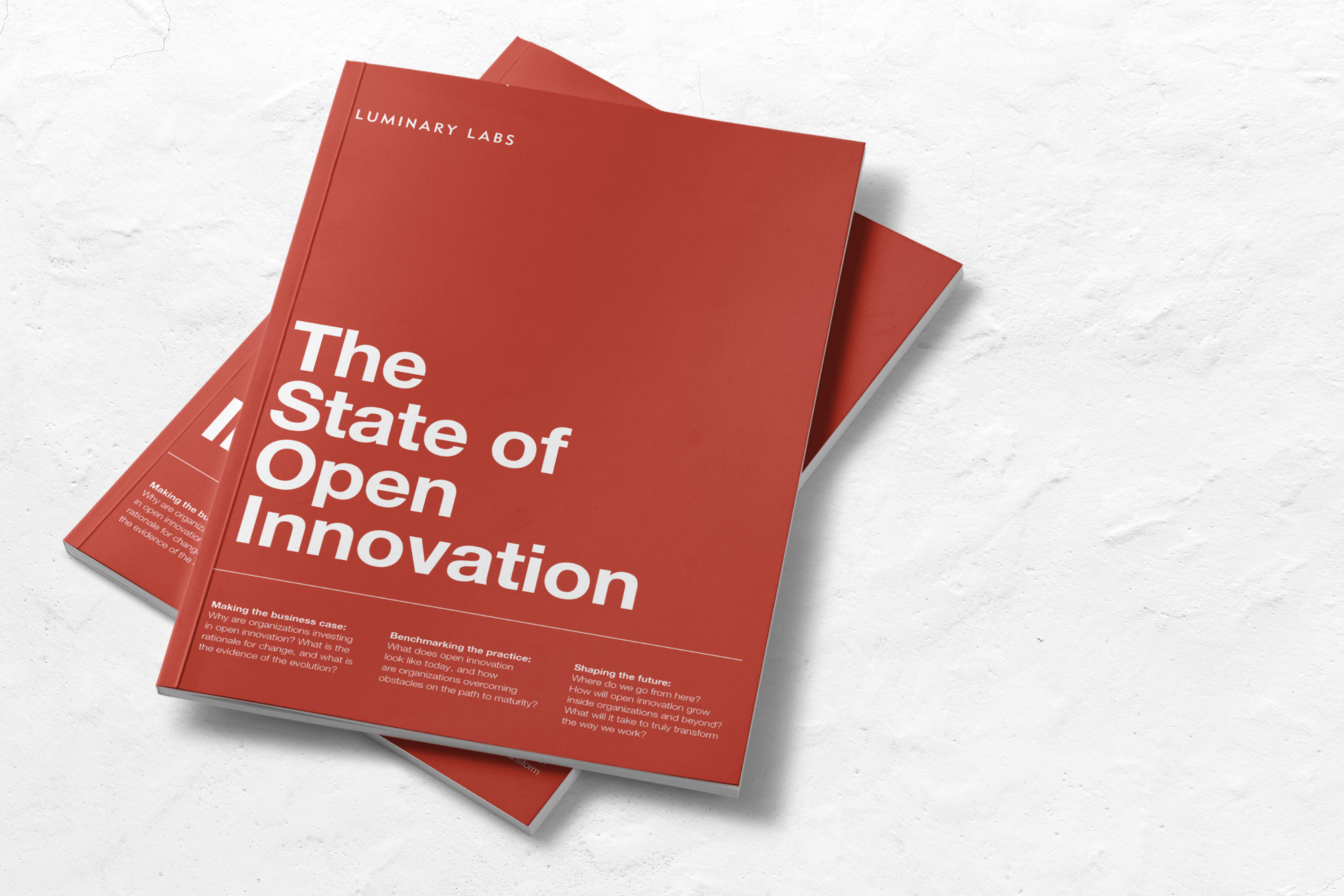Now available: State of Open Innovation 2023
Learn how 100+ leading organizations across 20+ industries are using open innovation to stay at the forefront: Our latest report offers fresh insights on designing programs, developing partnerships, and measuring outcomes.
The 2018 report and executive summary are available below.
The following excerpt is republished from the State of Open Innovation 2018, the inaugural cross-sector survey by Luminary Labs. Download the 2018 report for 30 pages of analysis, charts, and benchmarks — including insights from open innovation leaders at AstraZeneca, Bayer, City of Pittsburgh, MIT Solve, Mozilla, Nestlé USA, Pfizer, Schmidt Futures, Verizon, UCLA, and the U.S. Department of Health & Human Services.
Download the 2018 report.
In the 20th century, organizations prioritized internal excellence, protected intellectual property, and stoked competitive rivalries. In the first decades of the 21st century, we’re witnessing the emergence of a new way to win — partnership and collaboration are requisite in pursuit of new solutions to complex problems. Digitalization and globalization make it possible to tap the collective intellect of Earth’s population — not just those an organization has hired—and Earth’s population willingly participates.
The term “open innovation” was defined in 2003 by Henry Chesbrough in “Open Innovation: The New Imperative for Creating and Profiting from Technology,” and has been embraced by private sector, government, and nonprofit organizations in different ways and to varying degrees. Participatory design and co-creation have become table stakes for product and service design. Algorithmic prize competitions have become a viable option for solving big data problems. Open data sets are fueling new business models and public-private collaborations. And open innovation platforms have become a new intake valve for partnerships and investment.
Even for the most committed organizations, opening up is still an entirely new way of doing business. Pioneering a new competency is never easy, and there’s no established playbook for open innovation. While there is no shortage of academic research on open innovation, it is still described and practiced differently by different sectors, industries, organizations, and individual teams.
Fifteen years after the publication of Chesbrough’s book, what is the state of open innovation?
Luminary Labs surveyed nearly 100 leaders responsible for open innovation to answer that question. This 2018 report offers cross-sector insights and benchmarks — from strategic goals and the rationale for investment to organizational structures and specific activities.
A few themes emerged:
- Open innovation is more than an activity; it is a philosophy. While some executives may still see open innovation as a budget line item or isolated activity, those responsible for open innovation believe it is dramatically changing how their organizations will compete (and win) in the years to come.
- The elasticity of open innovation demonstrates its potential. The survey suggests that organizations are practicing open innovation in many ways, for many reasons, and to solve a wide range of problems. We are in a moment of extensive experimentation as private sector, government, and nonprofit organizations create proof points.
- It’s still early. While “open innovation manager” is a hot new job title and enthusiasm abounds, few organizations have dedicated open innovation teams. Many more are still determining what the competency should entail and where it should reside in the organization.
- Open innovation can look to digital transformation as a precedent. Open innovation threatens historical ways of working but has the potential to create enormous value. Not unlike the wave of digital transformation that is still rippling through every industry, open innovation is both a disruption and an opportunity. Early adopters are largely supported by senior leadership, and perhaps not surprisingly, the organizations that have more fully embraced digital are in a position to embrace open innovation as well.
Tapping into the truly transformative power of open innovation will require a seismic shift in the way people think and the way organizations work. As we look toward the future of open innovation, we offer suggestions to organizations for building and scaling their competencies.
In this landmark survey, nearly 100 private sector, government, and nonprofit organizations share how they are using open innovation in pursuit of new approaches to complex problems. Download the 2018 report to learn more.


